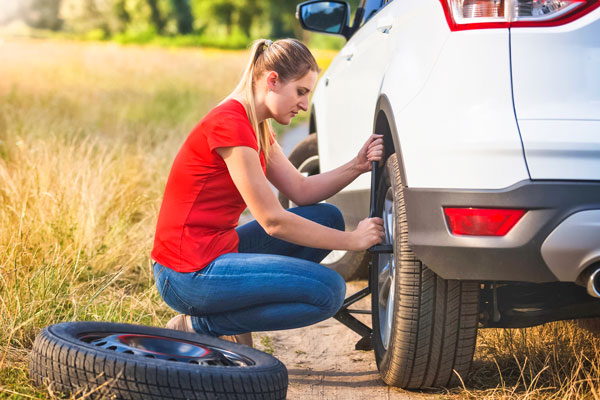Do you have a spare tire?
By Patte Smith; courtesy photo

Check your spare tire periodically to make sure it has good air pressure. Be sure all drivers in your household know how to take off a tire and put a spare tire on a car.My family took a road trip in June, and having a spare tire was a huge relief for us. We unavoidably hit a shredded semi-truck tire that exploded in front of us, and our tire was punctured. Fortunately, we had a spare tire in our vehicle, and we were able to drive to the next town to purchase a new replacement tire.
We were lucky. While equipping a car with a spare tire was considered standard several years ago, times have changed. Roughly 30 to 50 percent of new automobiles do not come with a spare tire. Automakers must adhere to stricter government fuel economy standards by 2025, prompting the removal of the additional weight. Not having a spare tire and jack helps to meet these standards. It also allows space for more cargo and passengers, which is appealing to many consumers.
It is important to check if your vehicle has a spare tire, and if so, what kind of spare is supplied. Some vehicles still have an additional full-size tire stowed away in a space in the trunk or secured to the rear or undercarriage of the vehicle. These tires can be driven on in the same manner as the original tire and allow you to continue without further delay. Replace/repair the old tire as soon as it is convenient to do so.
Some newer tires are designed to resist the effects of deflation when punctured. They may be called “run-flat” tires or “self-sealing” tires. Check the manufacturer’s specifications to find out how fast and how far you can drive on your run-flat tires. Many allow continued operation after the loss of some or even all inflation pressure, but only for distances up to 50 miles at a maximum speed up to 50 mph.
Other vehicles have a “donut” spare tire. These tires are smaller than a standard tire and are intended for short distances of travel – essentially to get you to the next automotive shop or gas station to get the repair. They are not designed to replace your damaged tire longterm. It is important to remember that once a spare tire is put on the vehicle, it is advisable to avoid driving at high speeds.
Spare tires need to be inspected and maintained on a regular basis, just like your standard tires. On the side of the road in the sweltering heat is not the best time to discover that your spare tire is not in working condition. Your local automotive center is a great place to start when inspecting your tires. Many vehicles have a warning light that illuminates when there is a change in tire pressure. It could be a faulty sensor, a change in temperature or altitude, or a nail that is lodged in a tire. Many automotive centers will provide a diagnostic inspection at no charge.
Before taking a trip, make sure to check the tire pressure on all your tires, and inspect the jack and tools for changing the spare as well.